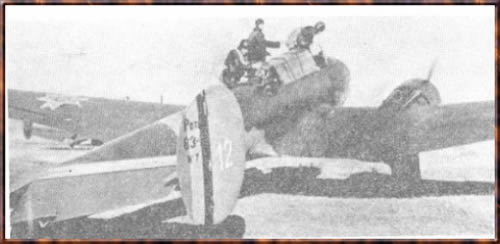After beating its rivals ( the Breguet Bre.690, the Hanriot H.220, Loire - Nieuport LN.20 and Romano R-110 ) in an open contest, the Po-63 managed to make such an impression on the French Air Ministry, that it was quick decided to place an order for a batch of no less than 7 pre-production Po-63 variants.

Eventually, 5 of these versions entered mass-production : - Potez Po-630C.3, a three-seat fighter powered by 2 Hispano-Suiza 14AB-02/03 or -10/11 radial, rated at 650 hp or 700 hp engines and armed with two fixed forward-firing 20 mm cannons plus a rear-firing 7.5 MAC machine gun ( initially was destined for night fighter units, but some planes were sent to single-seat fighter units to act as avions de commandement, meaning command aircraft for single-seat fighters ) ; Potez Po-631C.3, a dedicated three-seat fighter, powered by 2 Gnome-Rhône 14M-4/5 or -6/7 radial, with the same armament ; Potez Po-633B.2, a light bomber, pretty much similar to the 631C.3, but with a glazed lower nose where the bombardier stood , and an internal bomb bay where eight 50 kg bombs positioned vertically could be carried ; Potez Po-637A.3, a three-seat reconnaissance and army co-operation version, fitted with a glazed observation gondola and a Labrely F.20, F.30 or F.50 camera with up to 40 marker flares in the rear furselage, as well as two 50 kg bombs underneath the wings ; Potez Po-63.11A.3, the final army co-operation and reconnaissance version.